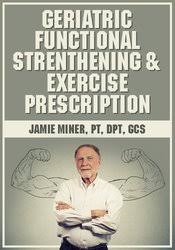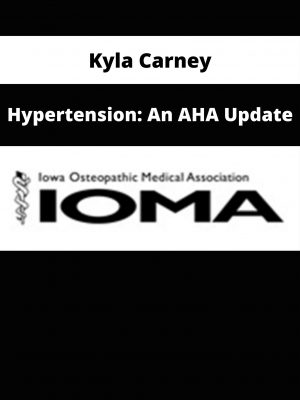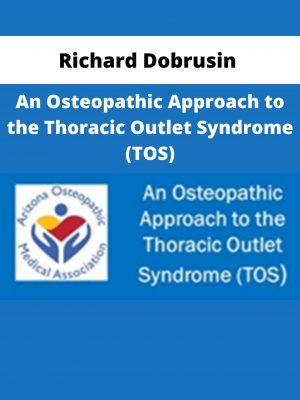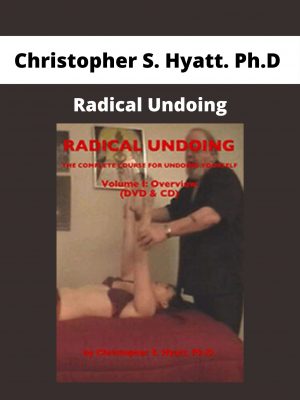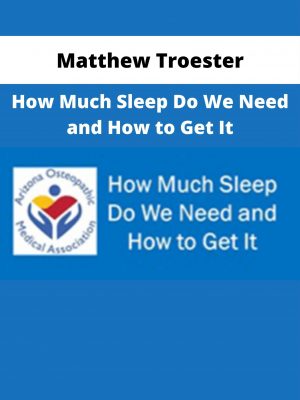Jamie Miner – Geriatric Functional Strengthening & Exercise Prescription
$200 Original price was: $200.$75Current price is: $75.
Shopping Instructions:
- DISCOUNT 15% : SHOP15
- Product Delivery: Within 1 – 12 hours after purchase.
Learn strategies to easily design safe and effective strength programs for every adult, even those with orthopedic and metabolic diseases.
Jamie Miner – Geriatric Functional Strengthening & Exercise Prescription
For many of your older adult patients aging seems to involve an inevitable loss of strength, energy, and vitality. You feel helpless and frustrated as you watch your older patients suffer from a loss of muscle mass and subsequent weakness, knowing these things predispose them to increased risk for injury. Strength training for this population has been proven to improve muscle strength and coordination, helping to maintain functional capacity and independence. By including appropriate strength training programs in your therapy plan, you can reverse and prevent the decreases in strength and energy your patients are experiencing.
Learn strategies to easily design safe and effective strength programs for every adult, even those with orthopedic and metabolic diseases. Get the information you need to help the most challenging patients – those with co-morbidities – successfully reach new levels of strength and vitality. Reduce the symptoms of metabolic diseases and arthritis in your patients using strength training, and keep them in their homes!
- Evaluate when weakness, deconditioning, poor posture, faulty movement habits, and poor core stability may be a problem
- Design effective interventions for functional strength and balance within the current limitations of each injury or chronic disease
- Adapt traditional exercises for those with orthopedic limitations due to injury or disease
- Apply strength training principles to enhance patient outcomes
- Construct effective programs for the most common injuries we see combined with the most common “lifestyle” conditions that accompany them
- Compare the risks vs. benefits of specific evidenced-based exercise programs to guide decision making for patients
LATEST TRENDS IN STRENGTH TRAINING IN OLDER ADULTS (2 HOURS)
- Changes that occur with aging
- Strength training’s impact on function improvement
- Techniques to measure deconditioning level and muscle weakness
- Evidence-based supportive research for strength training
- Outcome measures for program effectiveness
THE MUSCULOSKELETAL SYSTEM: INCOROPORATE PHYSIOLOGY INTO A BALANCED EXERCISE PLAN (30 MINUTES)
- How to develop strength
- How to develop power
- How to develop aerobic/anaerobic metabolis
ESTABLISH A STARTING POINT THROUGH AGE-RELATED ASSESSMENTS (CASE STUDY ICON) (30 MINUTES)
- Posture
- Balance
- Strength
- Cardiovascular
- Range of motion
- Functional assessment
CUSTOMIZED STRENGTH TRAINING EXERCISES AND MODIFICATIONS BASED ON DIAGNOSIS (LAB ICON) (1 HOUR)
- Frailty
- Elevated fall risk
- Chair-bound adults
- Orthopedic conditions
- Arthritis
- Joint replacements
- Hip
- Knee
- Reverse total shoulder
- Low back pain and spine care
- Osteoporosis
- Spinal stenosis
- Lumbar fusion
- Shoulder conditions
- Rotator cuff tears
- Shoulder impingement
- Frozen shoulder
- IT band syndrome
- Cardiovascular disease, COPD, obesity, and diabete
Would you like to receive Jamie Miner – Geriatric Functional Strengthening & Exercise Prescription ?
SAFETY CONSIDERATIONS FOR EXERCISE PROGRAMMING IN AN OLDER ADULT (LAB ICON) (30 MINUTES)
- Considerations for co-morbidities and chronic conditions
- Modify activities to overcome limitations
- Inability to tolerate hot and cold environments
- Overreaction to external stimuli
- Balance
- Impaired neuromuscular control and gait
- Parkinson’s disease
- CVA
- MS
- Considerations for an increased injury risk
- Recovery time considerations
- Impact of medication on exercise
UNIQUE CONSIDERATIONS WHEN PRESCRIBING EXERCISE IN OLDER ADULTS (30 MINUTES)
- Volume
- Intensity
- Duration
- Frequency
- Sequencing exercise
TIPS TO MOTIVATE PATIENTS—AND KEEP THEM ACTIVE (CASE STUDY ICON) (1 HOUR)
- Overcoming mental and emotional barriers to exercise
- Implementing exercise into daily life
- Low-cost exercise solutions
- Nutritional considerations
Related products
HEALTH & MEDICAL
Dr Heidi M Crocker – Yoga Alignment | Speaker: Heidi Crocker EdD, DC
HEALTH & MEDICAL
HEALTH & MEDICAL
HEALTH & MEDICAL
HEALTH & MEDICAL
Matthew Troester – How Much Sleep Do We Need and How to Get It
HEALTH & MEDICAL
Gaia—Creating-High-Voltage-Health-with-Glenn-Streeter-Open-Minds
HEALTH & MEDICAL



